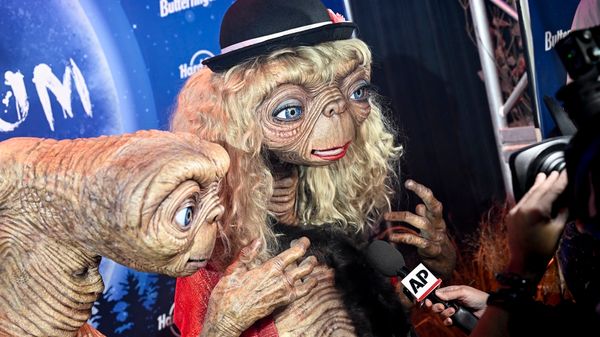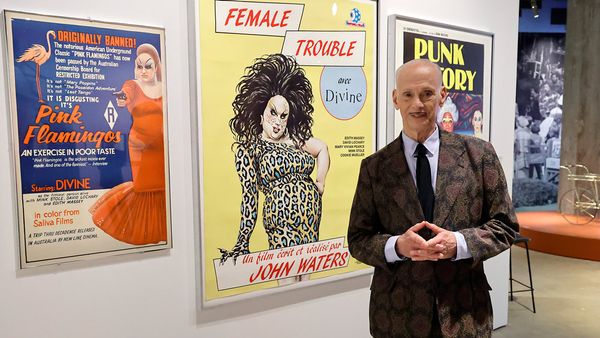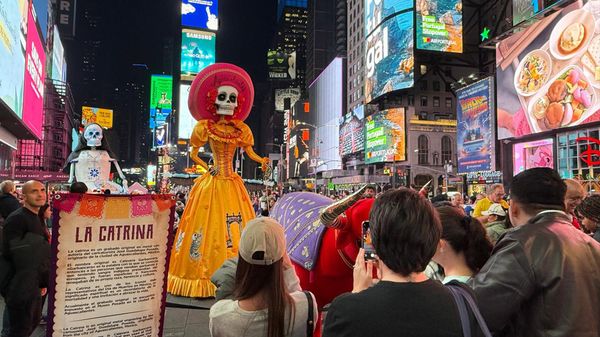
June 25, 2017
BARchive :: Seafood, Sailors, & San Francisco's Dockside Secrets
Michael Flanagan READ TIME: 6 MIN.
The start of the Pride Parade has a secret - and it's hidden! The downtown assembly area on the waterfront is among the oldest LGBT neighborhoods in the city, and there is barely a trace of it left.
The waterfront was a rough working class neighborhood with a produce market that had both a lesbian bar (The Front, 600 Front) and a railroad (the San Francisco Belt Railroad). Queer connections ran deep there. Before Harry Hay formed The Mattachine Society, he and actor Will Geer came to town for the General Strike on the docks in 1934. And in 1937 (one year after the Bay Bridge opened) the first queer bar, The Sailor Boy Tavern, opened on 24 Howard Street (it would stay open till 1953).
A connection to sailors was natural because of the docks, and lasted till the 1960s. Along with The Sailor Boy, there were other bars with nautical names like The Castaways (90 Market), The Ensign Caf� (1 Market Street), The Admiral Bar (first at 198, later 144 Embarcadero) and The Sea Cow (109 Steuart).
The connection between sailors and gay sex was well established in the U.S. early last century as well. The Newport sex scandal connected homosexuality and the navy in 1919 and resulted in a trial in which 17 sailors were convicted of sodomy. And painters like Charles Demuth (1883-1935) and Paul Cadmus (1904-1999) frequently depicted sailors in same-sex carousing. Cadmus' career was established in a scandal in 1934 when, as a WPA painter, his work "The Fleet's In!" was removed from an exhibition at the Corcoran Gallery. A similar controversy erupted in San Francisco in 1940 when Cadmus' works "Sailors and Floozies" and "Seeing the New Year In" were first removed and then replaced in the Treasure Island Palace of Fine Arts in August 1940.
By the 1950s, the Embarcadero was drawing sex tourists to San Francisco. Justin Spring's fascinating "Secret Historian, The Life and Times of Samuel Steward, Professor, Tattoo Artist and Sexual Renegade" gives us a glimpse of the world Steward arrived into in June 1953 to check out rumors about the YMCA. Steward kept detailed diaries and Spring gives the details:
"A choice motorcyclist in [room] 633," he noted in his diary. "Sailors everywhere! All branches [of the service!" and "Saw a fantastic thing down by the piers," he noted one afternoon," - two sailors standing watch for passersby while a third went down on a forth. Wanted to bust in, but [was] afraid."
This amazing window into a past world also notes bars in the area, including Chilli's (144 Embarcadero), a "queer low level joint on the Embarcadero."
Author, tattoo artist and sexual adventurer Samuel Steward.
Performers spread word of the neighborhood nationwide. By the early '50s, the Embarcadero had become a bawdy punch line, indicating homosexuality by just its mention. Historian and GLBT Historical Society founding member Gerard Koskovich recalled a recording by the drag comedian Rae Bourbon which he found in preparation for a talk on this neighborhood.
In the song "Give, Sister, Give" from Rae Bourbon - An Evening in Copenhagen (probably 1953) in a parody of a revival singer Bourbon says, "This young man was running wild on the Embarcadero in San Francisco. You know what the Embarcadero is? (Laughs)"
Divas and Demolitions
News had certainly spread in San Francisco.
On May 14, 1955 John "Bunny" Breckinridge, heir to the Comstock Lode fortune and future Ed Wood actor, was arrested in a police sweep for "vagrancy" at the Sea Cow Caf�. The arrest was widely reported in San Francisco (and picked up by newspapers throughout the country) as Breckinridge had announced his intention to have sex reassignment surgery the previous year and was media gold.
Bias was clear in both the arrest and the press, with the Examiner calling Breckinridge, "the millionaire who wants more than anything else to become a millionaires." The arresting officer testified that he found Breckinridge in the rest room of the bar, "with his hair made up like a woman, wearing a beret, a "flowing shirt and sandals."
Arrests were common in the neighborhood, as was police intimidation for protection money, which led to the "Gayola" scandal of 1960. In The Streets of San Francisco, Christopher Lowen Agee tells of how five bar owners from lower Market and the Embarcadero, including the Castaways and Jack's Waterfront Hangout (111 Embarcadero), approached Mayor Christopher and Police Chief Cahill to report the protection money graft.
The city worked with the bar owners, providing marked bills in a sting operation which led to eight officers being accused and five being indicted. Trials ran from July to August 1960. Only two of the five police were convicted in the case, but it led to early activism among gay bar owners.
The activism gave rise to the Tavern Guild and the formation of the League for Civil Education (which published the LCE News, the first LGBT newspaper in the country). The League first met at 90 Market St. on March 21, 1961.
The trial also set off another wave of police action leading to arrests and gay bar closures, as the police could now claim to be clean. The resilience of the community in the face of this harassment was amazing, with people opening one after another gay bar in the same spot as fast as the police could close them.
Within three years, 90 Market Street was Castaways, The Talk of the Town, Eddie's 90, The Last Resort and the Sail Away. The Sea Cow Caf� became the Cross Roads.
Along with the ability to open new bars, the community also stepped up to create a "war chest" which provided funds for legal fees of those arrested in the bars, and to file 'friend of the court' briefs.
What was also astounding about the waterfront bars was the cheerful persistence of both the bar owners and patrons. George Bauman, owner of Jack's, faced closure of his business because of the development of the Golden Gateway and Embarcadero Center.
He announced a "Demolition Party" on April 18, 1962 and a subsequent opening party at his new location at midnight on April 19. The LCE News reported, "Jack's Waterfront will close its doors at 12:00 Midnight at 111 Embarcadero and will open its doors at 12:01 at 226 Embarcadero. We will all go from here to the new place. At 11:30 the drinks will be half-priced."
Nor was the resistance celibate: In an oral history with the GLBT Historical Society, Bay Area Reporter cofounder Bob Ross said that when you visited The Ensign Caf�, "There would be a thousand bottles of beer and booze on the bar and nobody up there and you would go downstairs to the men's room, and there was just an orgy every day."
The second Jack's was closed by police in January 1963. But it was replaced by Original Don's, owned by Don Cavello, which lasted till 1964. The LCE News ran an ad on January 7, 1963 suggesting a second "exodus" from the gay bars of the waterfront to the Tool Box, one of the first South of Market bars.
Cavello would go on to open the Fickle Fox (842 Valencia) in 1966. Don Cavello was not the only waterfront bar owner to open subsequent bars for the community.
After the Front closed in 1962, Charlotte Coleman opened the Golden Cask (1725 Haight) in 1965 and The Mint (1942 Market Street) in 1968.
Lenny Mollet ran Lenny's 36 (36 Embarcadero) from 1954 till its closure by police in 1959.
A letter to the Daughters of Bilitis in the GLBT Historical archives described Lenny's 36 this way: "The habitu�s just give up all hope of maintaining any sense of decorum and flaunt around like a painted whore on VD Bridge."
Mollet went on to run On The Levee (937 Embarcadero) from 1963 to 1971 and Off The Levee (527 Bryant), which he opened in 1966. On The Levee was one of the last two gay bars in the neighborhood, the other being The Waterfront (128 Embarcadero). Both bars were closed by 1972.
There is very little left of the neighborhood on the street from these days. However, if you visit the Reel SF site you can see what Jack's Waterfront looked like in stills from D.O.A . and what 226 Embarcadero looked like in a still from the Steve McQueen film "Bullitt."
In the end, it was as much development as police action that caused the demise of the waterfront as a gay neighborhood. The Golden Gateway and Embarcadero Center development eliminated all bars north of Market by 1962.
The last remnant of the neighborhood was the rooms at the YMCA, which remained until 1989, when the building was split. The rooming house became the Harbor Court Hotel, where the ghost of the "YMCA Rooms" ad still haunts its southern wall.
The author would like to thank Justin Spring and Gerard Koskovich.
[Editor's note: In the print edition, a photo of Samuel Steward's Milwaukee tattoo parlor was mistakenly IDed as being the Oakland shop.]






